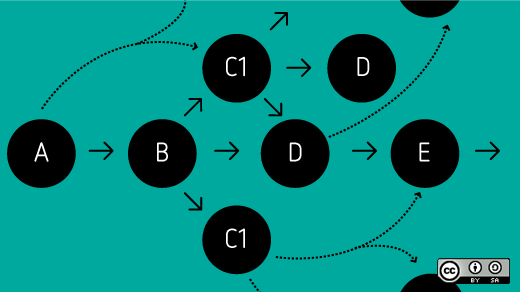With a focus on continuous improvements, agile project management upends the traditional linear way of developing products and services. Increasingly, organizations are adopting agile project management because it utilizes a series of shorter development cycles to deliver features and improve continually. This management style allows for rapid development, continuous integration (CI), and continuous delivery (CD).
Agile project management allows cross-functional teams to work on chunks of projects, solving problems and moving projects forward in shorter phases. This enables them to iterate more quickly and deliver more frequent updates.
The agile methodology provides a higher level of quality improvements on an incremental basis instead of waiting to distribute finished projects. And agile project management works. For example, PWC reports agile projects are 28% more successful than traditional project methodologies.
Adopting agile methodology
When agile methodology was introduced, it met skepticism and resistance. With today's rapid pace of innovation, it has become an accepted standard. The Project Management Institute's annual Pulse of the Profession survey finds that 71% of organizations report using an agile approach in project management, whether it is a fully agile project or hybrid model.
"We cannot afford anymore to have projects taking two to five years to deliver," says Michelin's Phillippe Husser in the Pulse of the Profession report. "During this time, the initial requirements have changed."
The 12 agile principles
While agile project management is very different from traditional project management, it doesn't have to be daunting to make the switch. Agile project management relies on 12 guiding principles that can help your team move faster together.
1. Customer-first
One of the first principles for groups using agile management is that the "highest priority is to satisfy the customer through early and continuous delivery." This means that above all else, the team works to solve problems for the customer, not to build features and tools that are cool but hard to use. This strategy encourages all product decisions to be data-driven from a customer's perspective. It may mean that many team members regularly interact with end users (including with interviews) or have access to data that shows usage.
The agile methodology drastically reduces the time from project initiation to customer feedback. As customers' needs or how they interact with the product change, the team is flexible in responding to these needs to build customer-focused technology. This process creates a feedback loop for continuous improvement.
2. The only thing constant is change
While it may seem radical to change requirements, the agile methodology allows for changing requirements, even late into development.
This principle is closely tied to the first. If the end goal of the team is to serve the end user best, the team must be flexible and able to make changes based on customers' behaviors and needs. Flexibility also allows an organization to capitalize on an emerging technology or new trends and gain competitive advantage.
3. Deliver faster
Instead of annual or semi-annual product updates and patches, agile encourages regular updates when a need is identified or to improve operations. Waiting to do significant releases can bloat the technology and create unforeseen issues, no matter how much it has been tested.
Agile encourages the team to deliver working software frequently within a short time frame. Smaller, more frequent releases allow for regular updates to the technology without huge risk. If something goes out and doesn't work, it requires a slight pullback. The agile methodology also encourages automation to help push out updates continuously.
4. Build cross-functional teams
Agile methodology believes that the most well-thought-out, usable, and sellable technologies require cross-functional teams working towards a shared goal. DevOps (development and operations) and DevSecOps (development, security, and operations) teams work in concert instead of in a linear progression. This allows the business team, the developers, QA, and other essential teams to work together from start to finish.
This change in perspective means all teams have skin in the game and makes it harder to push errors or low-quality tech onto the next team. Rather than making excuses, everyone works together on the same goals.
For cross-functional teams to work, it takes involvement from the top. A third of projects fail because of a lack of participation from senior management.
5. Encourage independent work
Another tenet of agile management is that individuals can stretch their job and learn new skills while working on projects. Because the teams are cross-functional, individuals are exposed to different abilities, roles, and styles. This exposure creates better-rounded workers who can attack problems from different perspectives.
Agile teams are typically self-directed. It takes the right team with a focused goal.
Agile allows managers to (per the Agile Manifesto) "build projects around motivated individuals. Give them the environment and support they need and trust them to get the job done."
6. Meet in person
While this principle may seem strange in the era of increased remote workers, agile management does encourage in-person meetings. This is because many managers believe the most efficient and effective method of conveying information is a face-to-face conversation.
For non-remote teams, this can mean having different team members sitting close together or even creating war rooms of different groups to communicate more effectively. Co-location means faster interactions. Instead of waiting for an email or call to be returned, talk to each other.
This goal can still be accomplished for remote teams. By using tools like Slack or Zoom, you can simulate in-person meetings and find the right answers quickly.
7. Go live
Organizations may have several ways to document the plan and measure success against goals. However, one of the best ways to measure a team's success in agile is via working software. Agile teams don't look at future forecasts to see how they are doing. Instead, live code is the primary measure of progress.
Planning and documentation are great, but without software that does the job, everything else is irrelevant.
8. Sustainable development
While agile development encourages fast releases, it is still vital that the team makes sustainable and scalable code. Because the first principle is to serve the customer, the team must think about creating technology and tools that can be used for the long haul.
The team should also be managed in a way that supports individuals. While long hours may be required for a short time, maintaining overall work-life balance is essential to avoid burnout.
9. Technical excellence
Agile methodology also believes that every member of the team is responsible for continuous attention to technical excellence. Even those without technical ability should QA work and ensure it is being built in a simple and accessible way. While bells and whistles may be nice, an agile methodology believes that good design enhances agility.
Additionally, code should improve with each iteration. Everyone is responsible for providing clear code or instructions throughout the process—not just at the end.
10. Simplify
Agile teams believe that simplicity is essential. There's a saying in agile circles: "maximize the amount of work not done." Eliminate and automate anything you can, and build tools that are straightforward for the end user.
11. Let teams self-organize
"The best architectures, requirements, and designs emerge from self-organizing teams," says the Agile Manifesto. While management is needed for oversight, the best agile teams figure out what needs to be done—and how it gets done—themselves.
12. Take time to reflect
At regular intervals, the best teams reflect on how to become more effective, then adjust accordingly.
Agile teams are introspective and evaluate their efficiency. When they discover a better way, they evolve.
Agile evolves with automation
Agile management has many benefits for the team and the end user. While the basic principles (like the nature of agile) have been established, the strategy is always evolving. Agile project management is evolving now by leveraging different types of automation.
For example, IT teams are leveraging IT process automation to manage repetitive tasks that used to take significant human resources. This allows teams to work more efficiently and focus on the bigger picture rather than monitoring, managing, and maintaining the software, hardware, infrastructure, and cloud services.
The more tasks that can be handled efficiently by your process automation rules, the quicker you will be able to iterate, test, and improve.
Getting started
Overall, agile project management presents many benefits. It provides a faster way for teams to deliver a better product with fewer bugs. It can encourage diverse teams to work together and learn from each other. It fosters better team communication, both in-person and remotely. And it can ultimately create a better experience for the end user.
Agile, however, has some drawbacks. If a team is still exploring what technology or solutions to build or doesn't have a firm grasp of the target customer, agile may not be the best methodology. Agile may also have too many requirements for very small teams and may be too flexible for extremely large teams.
Always complete due diligence to identify which management style is best for your team, and consider combining agile with other methodologies to create the best structure for you.









3 Comments